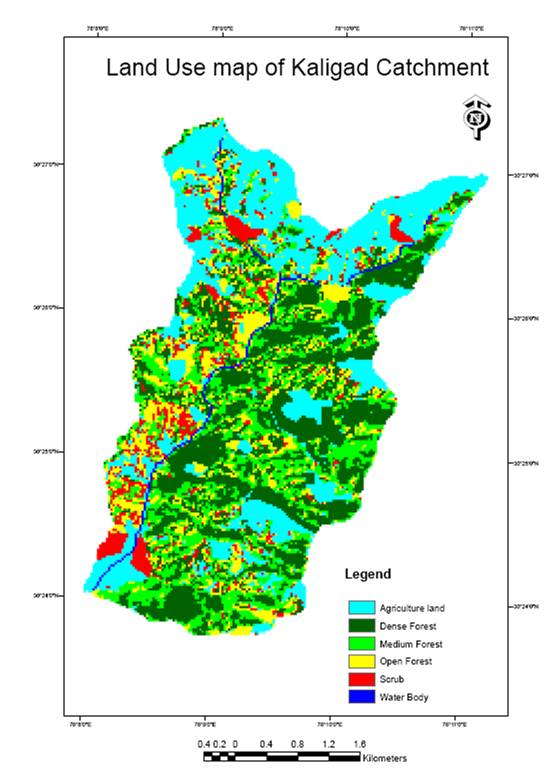Application of remote sensing and GIS in micro-watershed management -Part 4
Return to Part 1, Part 2, Part 3, Part 4
Table -4
Area distribution on the basis of landuse classes
| Sl No. | Landuse | Area in hectares |
| 1 | Agriculture land | 478.659 |
| 2 | Dense Forest | 548.937 |
| 3 | Medium Forest | 380.061 |
| 4 | Open Forest | 281.40 |
| 5 | Scrub | 134.021 |
| 6 | River | 21.606 |
|
TOTAL |
1844.37 | |
Table no.-5
Area distribution on the basis of Erosion classes
| Sl No. | Erosion Class | Area in hectares |
| 1 | Slight | 1062.07 |
| 2 | Moderate | 259.433 |
| 3 | High | 141.981 |
| 4 | Very High | 389.068 |
| TOTAL | 1844.37 | |
Conclusion
In this report, the emphasis was given on following points-
1) By using RS and GIS techniques, a microwatershed basic inventory was prepared in form of maps and text.
2) Six thematic layers of the study area such as aspect, slope, landuse, altitude, forest density, erosion class were generated using Satellite Digital Data.
3) On the basis of slope, landuse, altitude, forest density the study area has been categorized into 4 erosion classes.
4) Total area of the micro watershed is 1844.37 ha., which is divided into 4 classes of erosion susceptibility-
a) Slight erosion- 57.58 %
b) Moderate erosion – 14.07 %
c) High Erosion -7.70 %
d) Very high Erosion – 21.11 %
5) Area covered under high and very high erosion classes should be considered on priority for management interventions to control erosion by applying soil conservation measures, gap filling etc.
Return to Part 1, Part 2, Part 3, Part 4
Author’s Bio
 Raghu Ranjan Rai is a Forestry (GIS) post-graduate and is presently a Manager Forestry Operations and GIS in S & P Energy Solutions PLC Ethiopia (SP Group Mumbai). His primary area of interest is GIS mapping and Forestry operations. Contact him at- raghufri09(at)gmail(dot)com
Raghu Ranjan Rai is a Forestry (GIS) post-graduate and is presently a Manager Forestry Operations and GIS in S & P Energy Solutions PLC Ethiopia (SP Group Mumbai). His primary area of interest is GIS mapping and Forestry operations. Contact him at- raghufri09(at)gmail(dot)com


